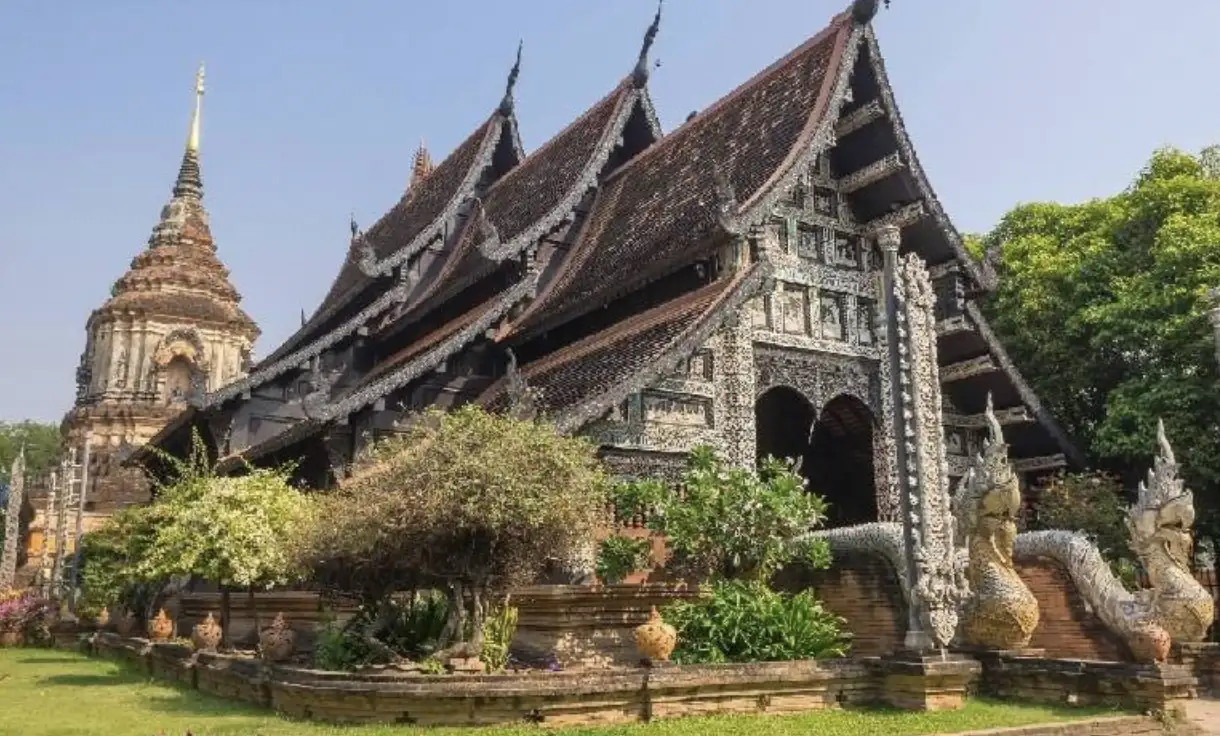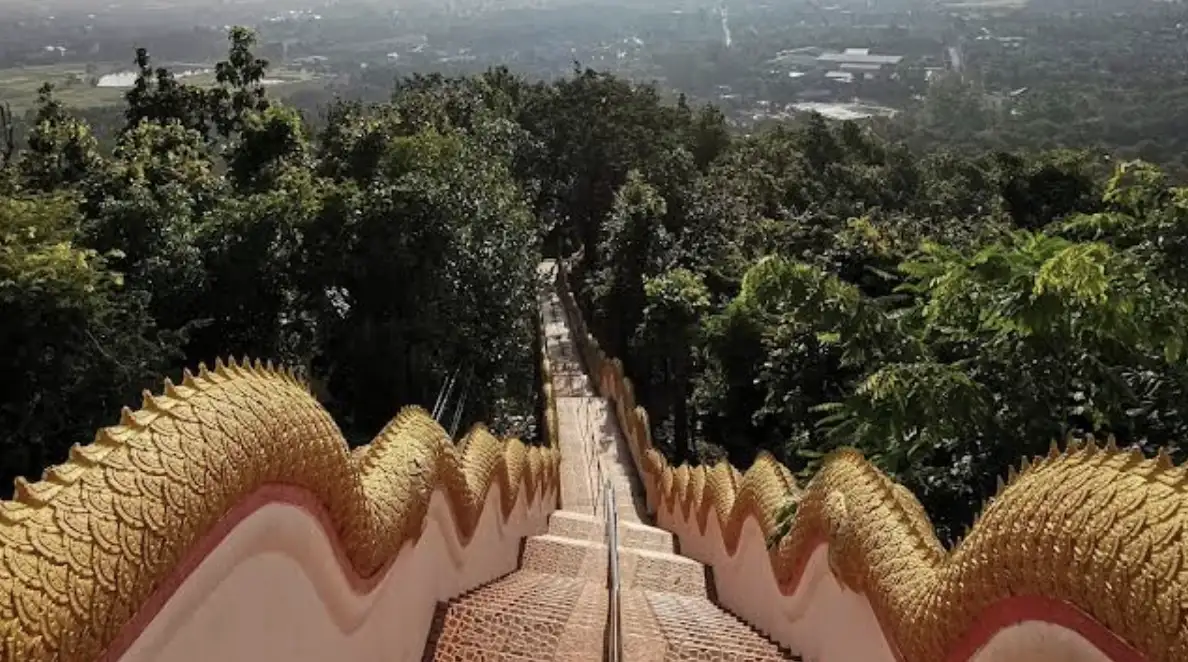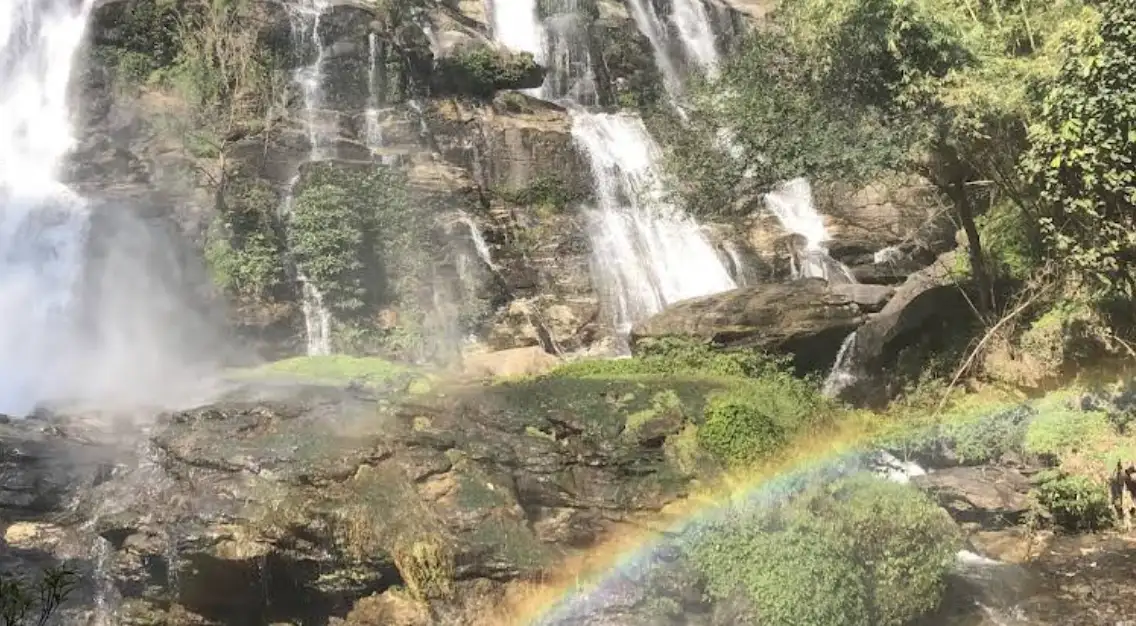Table of Contents
Doi Suthep-Pui National Park, just a short drive from Chiang Mai’s vibrant city center, is a treasure trove of natural beauty, spiritual landmarks, and outdoor adventure. Spanning over 260 square kilometers, this park is home to the iconic Wat Phra That Doi Suthep, lush forests, cascading waterfalls, and trails that offer breathtaking views of northern Thailand’s mountains. My recent visit was a perfect mix of cultural immersion, hiking, and serene moments in nature. Here’s my heartfelt review as a traveler, sharing the best of Doi Suthep-Pui with tips to make your trip unforgettable.
Getting There: A Scenic Start
The park is only 16 km from Chiang Mai’s Old City, making it an easy day trip. I opted for a rented motorbike (300 THB/day, about $9 USD) for the flexibility to explore at my own pace. The ride up the winding road to Doi Suthep was exhilarating, with cool air and glimpses of the city below through the trees. If biking isn’t your thing, grab a red songthaew (shared taxi) from Chiang Mai University for about 60 THB round-trip per person, or hire a private driver (1,000-1,500 THB/day). I stopped at a roadside stall for a 20 THB coconut to sip while admiring the view. Tip: Check your fuel before heading up, as gas stations are scarce in the park.
Wat Phra That Doi Suthep: A Spiritual Gem
The park’s crown jewel is Wat Phra That Doi Suthep, a glittering temple perched at 1,073 meters above sea level. Legend says a white elephant carrying a sacred relic chose this spot, and the temple’s golden chedi still draws pilgrims and tourists alike. The entry fee is 30 THB for foreigners (about $1 USD), and the 306-step naga-lined staircase to the temple is a rite of passage. I climbed it in the morning, energized by the cool November breeze (around 20°C/68°F), though there’s a cable car for 20 THB if you prefer.

The temple complex is stunning—golden spires, intricate murals, and a panoramic view of Chiang Mai’s sprawl below. I wandered for an hour, soaking in the chants of monks and the scent of incense. Locals were making merit, offering flowers and candles, which added a lively yet peaceful vibe. Dress respectfully (shoulders and knees covered; sarongs are available to borrow) and remove shoes before entering sacred areas. Early mornings (before 8 AM) are best to avoid crowds and catch the sunrise glow on the chedi. Don’t miss the small museum near the exit for a quick dive into the temple’s history.
Bhubing Palace: A Royal Retreat
A few kilometers past the temple lies Bhubing Palace, the royal family’s winter residence. The palace itself is off-limits when royalty is present, but the sprawling gardens are open to visitors (50 THB entry). I was charmed by the manicured lawns, rose gardens, and fern-lined paths, which felt like a slice of Europe in Thailand’s mountains. The cool air at 1,200 meters was refreshing, and I spotted colorful birds flitting about. It’s a calm spot for a leisurely stroll, though photography is restricted in some areas. Visit in January or February for peak flower blooms, and wear modest clothing (no shorts or sleeveless tops). I grabbed a mango smoothie (40 THB) at the café near the entrance, a perfect treat while relaxing on a bench.
Hiking Trails: Nature’s Embrace
Doi Suthep-Pui is a hiker’s paradise, with trails ranging from easy strolls to challenging treks. I chose the Monk’s Trail, a 2-km path starting near Wat Phra That Doi Suthep and leading to Wat Pha Lat, a hidden forest temple. The trail, marked by orange monk robes tied to trees, winds through dense jungle with the sound of birds and rustling leaves. Wat Pha Lat, tucked beside a stream, felt like a secret sanctuary—its weathered stone structures and quiet monks gave it an ancient, mystical vibe. The hike took about 1.5 hours round-trip, and I loved the solitude compared to the busier temple above.

For a tougher challenge, the trail to Doi Pui Peak (1,685 meters) offers sweeping views. It’s a 6-km round-trip from the Doi Pui Hmong village, best done with a guide (500 THB) due to unmarked sections. My friend tackled this one and raved about the misty summit, though it’s steep and requires good fitness. Trails can be slippery in the rainy season (June-October), so bring sturdy shoes and check weather updates. November to February is ideal for clear skies and cooler temps (15-22°C/59-72°F).
Waterfalls: Chasing Cascades
The park’s waterfalls are perfect for nature lovers. Huay Kaew Waterfall, near the park’s entrance, is an easy stop with a short path from the road. I picnicked by the rocks, enjoying the gentle cascade and cool mist. It’s great for families, with shallow pools for kids to splash in. Montha Than Waterfall, deeper in the park, is a multi-tiered beauty reachable via a 1-km trail. The hike was moderate, with some rocky sections, but the serene pools at each level were worth it. I swam in the chilly water, feeling refreshed after the trek. Both waterfalls are free to visit, but bring a towel and non-slip shoes, as rocks can be slick. Avoid peak rainy season for safer access.

Doi Pui Hmong Village: Cultural Connection
The Doi Pui Hmong Village, near the park’s highest point, offers a glimpse into hill tribe life. I wandered through the narrow lanes, where locals sold handmade textiles, silver jewelry, and dried herbs. I bought a colorful embroidered bag for 200 THB, chatting with the vendor about Hmong traditions. The village’s small museum (10 THB entry) showcases traditional clothing and tools, giving context to their culture. Some parts felt touristy, with souvenir stalls, but the flower gardens and mountain views were lovely. Be respectful—ask before photographing people and support local vendors to contribute to the community. A nearby café served Hmong coffee (30 THB), rich and aromatic, perfect for a break.
Practical Tips for Visiting Doi Suthep-Pui
Best Time to Visit: November to February for cool, dry weather (15-25°C/59-77°F) and clear views. March to May is hot, and June to October brings rain, making trails and roads slippery.
Getting Around: Motorbikes are ideal for exploring multiple sites, but songthaews or private drivers work well. Park roads are paved but curvy, so drive cautiously.
What to Bring: Light jacket (mornings and evenings are cool), hiking shoes, sunscreen, insect repellent, and cash for small vendors. A camera is a must for the views.
Where to Eat: Food stalls near Wat Doi Suthep sell khao soi and grilled chicken (50-80 THB). For a sit-down meal, Khum Phucome Restaurant near the palace offers northern Thai dishes with a view (150-200 THB per dish).
Where to Stay: Day trips from Chiang Mai are easy, but for an overnight, try Baan Suan Darb Dao guesthouse (1,000 THB/night) near the park for a cozy, nature-immersed stay.
Respect the Environment: Stick to trails, don’t litter, and be mindful at sacred sites. Choose guides or tours that support local conservation efforts.
Final Thoughts
Doi Suthep-Pui National Park is a destination that feeds the soul. The golden glow of Wat Doi Suthep, the quiet rustle of jungle trails, and the warmth of the Hmong villagers left me with memories I’ll cherish. Compared to busier Chiang Mai attractions, the park feels like a sanctuary where you can breathe deeply and reconnect with nature and culture. Whether you’re climbing temple steps, chasing waterfalls, or savoring a mountain sunset, every moment here feels special.
If you’re in Chiang Mai, don’t miss Doi Suthep-Pui. It’s the kind of place that makes you pause and appreciate the world’s beauty. I’m already dreaming of my next hike, maybe to catch a misty sunrise at Doi Pui. Pack your sense of wonder and let this park steal your heart.

